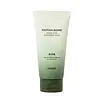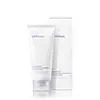What's inside
What's inside
 Key Ingredients
Key Ingredients

 Benefits
Benefits

 Concerns
Concerns

 Ingredients Side-by-side
Ingredients Side-by-side

Water
Skin ConditioningGlycerin
HumectantSodium Cocoyl Glycinate
CleansingSodium Cocoyl Glutamate
CleansingSodium Methyl Cocoyl Taurate
Cleansing1,2-Hexanediol
Skin ConditioningCitric Acid
BufferingPotassium Cocoyl Glycinate
Sodium Chloride
MaskingGlyceryl Stearate
EmollientSalicylic Acid
MaskingCamellia Sinensis Leaf Extract
AntimicrobialCitrus Nobilis Peel Extract
MaskingButylene Glycol
HumectantGardenia Florida Fruit Extract
Skin ConditioningCupressus Sempervirens Leaf/Stem Extract
Skin ConditioningCitrus Aurantium Bergamia Fruit Oil
MaskingHedera Helix Leaf/Stem Extract
AntimicrobialLitsea Cubeba Fruit Oil
MaskingRibes Nigrum Leaf Extract
PerfumingLactobacillus Ferment
Skin ConditioningCentella Asiatica Extract
CleansingPolygonum Cuspidatum Root Extract
AntioxidantScutellaria Baicalensis Root Extract
AstringentTheobroma Cacao Seed Extract
AntioxidantSaccharomyces Ferment
Skin ConditioningGlycyrrhiza Glabra Root Extract
BleachingDextrin
AbsorbentChamomilla Recutita Flower Extract
MaskingRosmarinus Officinalis Leaf Extract
AntimicrobialLactobacillus Ferment Lysate
Skin ConditioningMentha Suaveolens Leaf Extract
AstringentTaraxacum Officinale Leaf Extract
Skin ConditioningThymus Vulgaris Extract
PerfumingEthylhexylglycerin
Skin ConditioningWater, Glycerin, Sodium Cocoyl Glycinate, Sodium Cocoyl Glutamate, Sodium Methyl Cocoyl Taurate, 1,2-Hexanediol, Citric Acid, Potassium Cocoyl Glycinate, Sodium Chloride, Glyceryl Stearate, Salicylic Acid, Camellia Sinensis Leaf Extract, Citrus Nobilis Peel Extract, Butylene Glycol, Gardenia Florida Fruit Extract, Cupressus Sempervirens Leaf/Stem Extract, Citrus Aurantium Bergamia Fruit Oil, Hedera Helix Leaf/Stem Extract, Litsea Cubeba Fruit Oil, Ribes Nigrum Leaf Extract, Lactobacillus Ferment, Centella Asiatica Extract, Polygonum Cuspidatum Root Extract, Scutellaria Baicalensis Root Extract, Theobroma Cacao Seed Extract, Saccharomyces Ferment, Glycyrrhiza Glabra Root Extract, Dextrin, Chamomilla Recutita Flower Extract, Rosmarinus Officinalis Leaf Extract, Lactobacillus Ferment Lysate, Mentha Suaveolens Leaf Extract, Taraxacum Officinale Leaf Extract, Thymus Vulgaris Extract, Ethylhexylglycerin
Water
Skin ConditioningSodium Cocoyl Isethionate
CleansingGlycerin
HumectantSodium Methyl Cocoyl Taurate
CleansingPolyglyceryl-3 Methylglucose Distearate
EmulsifyingHydrogenated Coconut Acid
EmollientCoco-Betaine
CleansingHydroxypropyl Starch Phosphate
Sodium Isethionate
CleansingCitric Acid
BufferingPotassium Cocoyl Glycinate
Caprylyl Glycol
EmollientChlorphenesin
AntimicrobialSodium Chloride
MaskingCaprylic/Capric Triglyceride
MaskingCamellia Sinensis Leaf Water
MaskingCitrus Aurantium Dulcis Peel Oil
MaskingEthylhexylglycerin
Skin ConditioningDisodium EDTA
Citrus Paradisi Peel Oil
MaskingLavandula Angustifolia Oil
MaskingButylene Glycol
HumectantAllantoin
Skin ConditioningDipotassium Glycyrrhizate
HumectantCinnamomum Camphora Bark Oil
MaskingPelargonium Graveolens Flower Oil
Masking1,2-Hexanediol
Skin ConditioningCentella Asiatica Extract
CleansingGaultheria Procumbens Leaf Extract
PerfumingMadecassoside
AntioxidantAsiaticoside
AntioxidantAsiatic Acid
Skin ConditioningMadecassic Acid
Skin ConditioningWater, Sodium Cocoyl Isethionate, Glycerin, Sodium Methyl Cocoyl Taurate, Polyglyceryl-3 Methylglucose Distearate, Hydrogenated Coconut Acid, Coco-Betaine, Hydroxypropyl Starch Phosphate, Sodium Isethionate, Citric Acid, Potassium Cocoyl Glycinate, Caprylyl Glycol, Chlorphenesin, Sodium Chloride, Caprylic/Capric Triglyceride, Camellia Sinensis Leaf Water, Citrus Aurantium Dulcis Peel Oil, Ethylhexylglycerin, Disodium EDTA, Citrus Paradisi Peel Oil, Lavandula Angustifolia Oil, Butylene Glycol, Allantoin, Dipotassium Glycyrrhizate, Cinnamomum Camphora Bark Oil, Pelargonium Graveolens Flower Oil, 1,2-Hexanediol, Centella Asiatica Extract, Gaultheria Procumbens Leaf Extract, Madecassoside, Asiaticoside, Asiatic Acid, Madecassic Acid
 Reviews
Reviews

Ingredients Explained
These ingredients are found in both products.
Ingredients higher up in an ingredient list are typically present in a larger amount.
1,2-Hexanediol is a synthetic liquid and another multi-functional powerhouse.
It is a:
- Humectant, drawing moisture into the skin
- Emollient, helping to soften skin
- Solvent, dispersing and stabilizing formulas
- Preservative booster, enhancing the antimicrobial activity of other preservatives
Butylene Glycol (or BG) is used within cosmetic products for a few different reasons:
Overall, Butylene Glycol is a safe and well-rounded ingredient that works well with other ingredients.
Though this ingredient works well with most skin types, some people with sensitive skin may experience a reaction such as allergic rashes, closed comedones, or itchiness.
Learn more about Butylene GlycolCentella Asiatica Extract (Centella) is derived from an herb native to Southeast Asia. It is famous for its anti-inflammatory and soothing properties.
Centella is rich in antioxidants and amino acids, such as Madecassic Acid and Asiaticoside.
Studies show the compounds in centella help with:
The combination of all these properties makes centella effective at soothing, hydrating, and protecting the skin.
Other great components of centella include Vitamin A, vitamin C, several B vitamins, and Asiatic Acid.
Fun fact: Centella has been used as a medicine and in food for many centuries. As a medicine, it is used to treat burns, scratches, and wounds.
Learn more about Centella Asiatica ExtractCitric Acid is an alpha hydroxy acid (AHA) naturally found in citrus fruits like oranges, lemons, and limes.
Like other AHAs, citric acid can exfoliate skin by breaking down the bonds that hold dead skin cells together. This helps reveal smoother and brighter skin underneath.
However, this exfoliating effect only happens at high concentrations (20%) which can be hard to find in cosmetic products.
Due to this, citric acid is usually included in small amounts as a pH adjuster. This helps keep products slightly more acidic and compatible with skin's natural pH.
In skincare formulas, citric acid can:
While it can provide some skin benefits, research shows lactic acid and glycolic acid are generally more effective and less irritating exfoliants.
Most citric acid used in skincare today is made by fermenting sugars (usually from molasses). This synthetic version is identical to the natural citrus form but easier to stabilize and use in formulations.
Read more about some other popular AHA's here:
Learn more about Citric AcidEthylhexylglycerin (we can't pronounce this either) is commonly used as a preservative and skin softener. It is derived from glyceryl.
You might see Ethylhexylglycerin often paired with other preservatives such as phenoxyethanol. Ethylhexylglycerin has been found to increase the effectiveness of these other preservatives.
Glycerin is already naturally found in your skin. It helps moisturize and protect your skin.
A study from 2016 found glycerin to be more effective as a humectant than AHAs and hyaluronic acid.
As a humectant, it helps the skin stay hydrated by pulling moisture to your skin. The low molecular weight of glycerin allows it to pull moisture into the deeper layers of your skin.
Hydrated skin improves your skin barrier; Your skin barrier helps protect against irritants and bacteria.
Glycerin has also been found to have antimicrobial and antiviral properties. Due to these properties, glycerin is often used in wound and burn treatments.
In cosmetics, glycerin is usually derived from plants such as soybean or palm. However, it can also be sourced from animals, such as tallow or animal fat.
This ingredient is organic, colorless, odorless, and non-toxic.
Glycerin is the name for this ingredient in American English. British English uses Glycerol/Glycerine.
Learn more about GlycerinPotassium Cocoyl Glycinate is an amino acid-based surfactant and cleaning agent. This ingredient can be derived from animals or plants. It may also be synthetically created from fatty acids of the coconut and glycine.
Potassium Cocoyl Glycinate is a gentle surfactant. Surfactants help gather the dirt, oil, and other pollutants from your skin to be rinsed away. It is a mild cleanser and naturally produces foam.
Chances are, you eat sodium chloride every day. Sodium Chloride is also known as table salt.
This ingredient has many purposes in skincare: thickener, emulsifier, and exfoliator.
You'll most likely find this ingredient in cleansers where it is used to create a gel-like texture. As an emulsifier, it also prevents ingredients from separating.
There is much debate on whether this ingredient is comedogenic. The short answer - comedogenic ratings don't tell the whole story. Learn more about comegodenic ratings here.
The concensus about this ingredient causing acne seems to be divided. Research is needed to understand if this ingredient does cause acne.
Scrubs may use salt as the primary exfoliating ingredient.
Learn more about Sodium ChlorideThis gentle cleansing and foaming ingredient is known for leaving a smooth feeling in skin and hair. It is made using coconut oil.
According to the manufacturer, it is soluble in water and has resistance to hard water, acid, and alkali.
Due to its coconut base, it may not be Malassezia folliculitis safe.
Learn more about Sodium Methyl Cocoyl TaurateWater. It's the most common cosmetic ingredient of all. You'll usually see it at the top of ingredient lists, meaning that it makes up the largest part of the product.
So why is it so popular? Water most often acts as a solvent - this means that it helps dissolve other ingredients into the formulation.
You'll also recognize water as that liquid we all need to stay alive. If you see this, drink a glass of water. Stay hydrated!
Learn more about Water